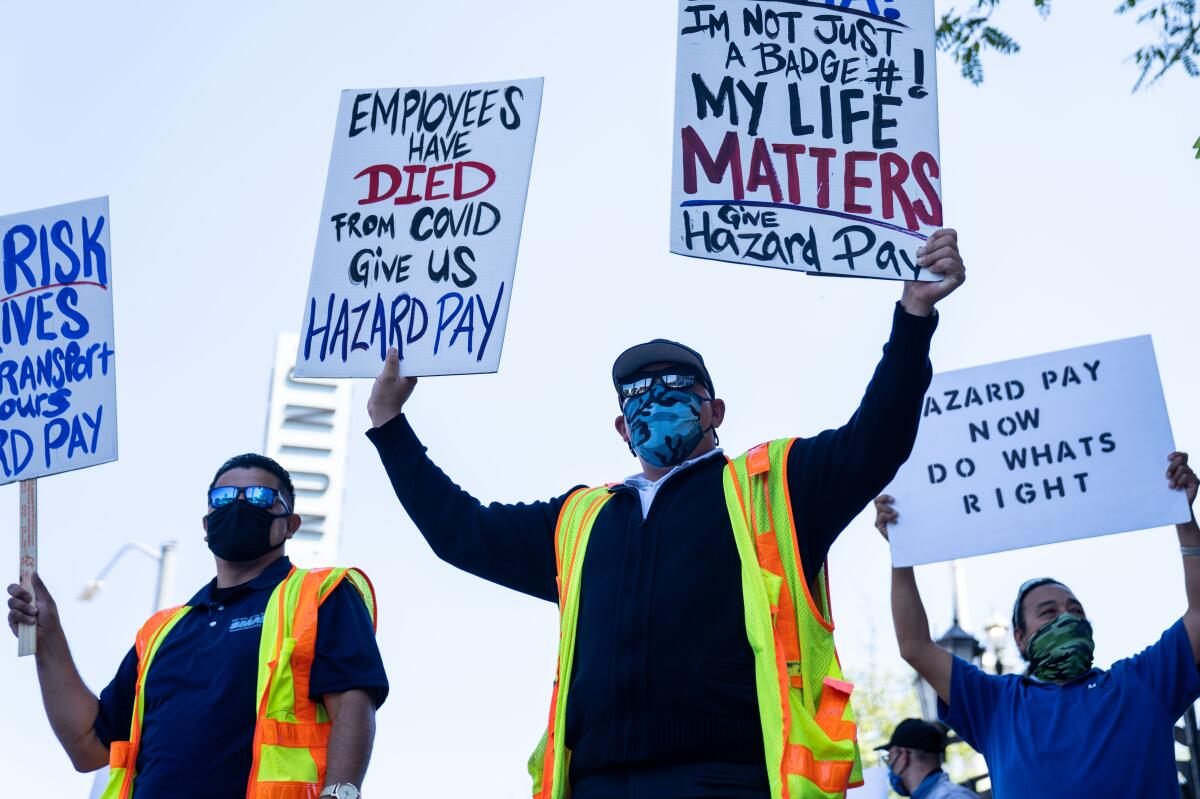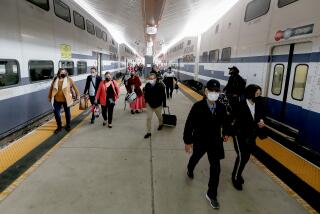‘Nothing can be off the table’ as California coronavirus deaths surge toward 7,000

California coronavirus death approached 7,000 as officials raised new alarms about rapid community spread and the grim consequences ahead if the public cannot change its behavior.
As of Saturday morning, the state’s coronavirus-related death toll stood at 6,958. Daily death totals have begun to increase after a month of spiking cases and hospitalizations tied to businesses reopening and people getting back to old habits and social gatherings.
Los Angeles Mayor Eric Garcetti again warned residents that the city could reimpose a mandatory stay-at-home order should conditions continue to deteriorate.
“We’re not back to a Safer at Home order, but we all need to do our part to minimize the spread of COVID-19,” he said.
L.A. County Public Health Director Barbara Ferrer said Thursday that “nothing can be off the table in the pandemic” but that she personally hopes “we don’t have to go back there. I hope that we figure out a way to take care of each other, to be sensible about what we’re doing.”
The coronavirus continues to spread in L.A. County as officials Friday confirmed 51 more deaths related to COVID-19 and 2,667 additional cases.
There are 1,995 people hospitalized with the coronavirus in the county, with 26% in intensive care and 17% on ventilators. It’s a significant increase from the 1,350-to-1,450 daily hospitalizations seen four weeks ago, according to the Department of Public Health.
Meanwhile, the seven-day average the county’s daily test positivity rate — the share of those tested for the coronavirus whose results are positive — has climbed to 10%.
L.A. County has identified more than 127,300 cases of the virus and seen more than 3,700 deaths, with the number of patients with confirmed infections having increased by more than 40% having increased by more than 40% in the last three weeks. Officials have warned of the potential for exceeding hospital capacity.
In one outbreak, more than 300 infections and four virus-related deaths have been reported among workers at a Los Angeles Apparel factory, county public health officials announced Friday.
In a statement Friday evening, the county health department said that it shut down the South L.A. garment manufacturer on June 27 after inspectors found “flagrant violations” of infection control orders, adding that the company had failed to cooperate with the county’s investigation. .
Half of California’s 58 counties are now on the state’s coronavirus watchlist as the number of infections, hospitalizations and deaths continue to rise.
The state reported 7,798 new cases of COVID-19 on Friday. On Thursday, California set a one-day record with 9,816 new cases and 137 related deaths — the second-highest total on a single day since the pandemic began, officials said.
Statewide, there have been more than 304,000 confirmed coronavirus infections and nearly 6,900 deaths.
The surge of new cases on Thursday was fueled, in part, by Stanislaus County, which made a change to its reporting systems that resulted in the addition of nearly 1,400 cases that had not been previously tallied.
Even without those cases, though, California still would have seen one of its highest single-day counts to date.
Across the state, 29 counties are seeing elevated disease transmission and/or increasing hospitalizations — up from 26 earlier in the week.
Among the latest additions is Placer County, which “is experiencing increased hospitalizations and limited hospital capacity,” according to the state.
Factors driving the spread of COVID-19 there, state officials said, “include large households where staying away from others while ill is difficult, community and extended family gatherings, and indoor work environments where physical distancing is difficult.”
If a county is on the monitoring list for three consecutive days, the state will require it to close bars and indoor dining in restaurants, as well as other indoor business operations, for at least three weeks.
The state’s watchlist also now includes Yuba and Sutter counties, which grabbed headlines in May when they began allowing some businesses to reopen despite the statewide stay-at-home order.
In a video statement Wednesday, Yuba-Sutter Health Officer Dr. Phuong Luu said that although the region was “doing well just two months ago,” conditions have worsened because “unfortunately the community became too lax, too complacent.”
“We were overly confident that we crushed COVID-19. We never crushed it,” she said. “We only flattened the curve. But the curve never went fully away and now is roaring back with exponential growth in terms of new cases every day.”
The state has identified workplace transmission and “household clusters relating to friend and family gatherings” as factors contributing to the spread of the disease in those counties. However, officials said “40% are unknown due to cases not able or not willing to provide source of exposure.”
“It’s always going to be this dance — two steps forward, one step back — if we see worsening of the situation so that our fragile healthcare system is not decimated and doesn’t go into crisis,” Luu said. “And this dance will continue until we have a vaccine.”
More to Read
Sign up for Essential California
The most important California stories and recommendations in your inbox every morning.
You may occasionally receive promotional content from the Los Angeles Times.












